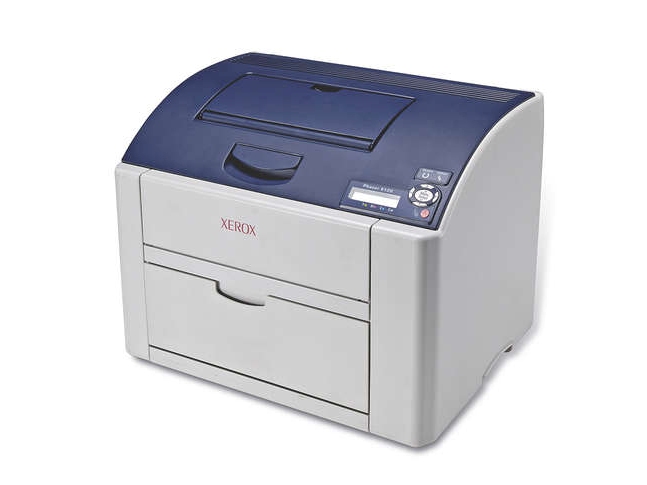TechRadar Verdict
Accurate colour prints and sharp text from the Xerox are let down by slow print times
Pros
- +
Compact design
Well specified
Good quality colour prints
Sharp and accurate text
Cons
- -
Very slow multiple page text printing
No integral paper tray
Why you can trust TechRadar
The Xerox Phaser 6120 looks strikingly familiar to its rival, the Konica Minolta Magicolor 2450. The only difference is the deep blue top plate and lack of front-mounted USB port on the Xerox machine. Specifications are similar, too - these include a 200-sheet paper tray, a 600x600dpi print engine and 128MB of RAM fitted as standard. Ethernet support is built in, as is USB 2.0 connectivity.
The Phaser 6120 performed well in our tests, with colour being a particular strong point. Images produced by this laser printer are punchy without being unrealistic, and the level of detail is very good. There's no discernible colour shift, and at just six seconds for a full A4 image the Xerox is no slow-coach, either.
However, our text test seemed a bridge too far. Just to ensure that we'd done nothing wrong, we repeated the test several times. The results were the same and the Xerox really did disappoint here. This is such a shame, because the end product isn't bad - characters are a deep black and edges sharp. However, if speed-printing is important to you, then this printer isn't ideal.
The Xerox is a compact, colour-accurate printer capable of producing good quality output, but if you'll be printing a lot of long text-based documents or need multiple copies fast, then steer clear. Like its doppelgänger, the Konica Minolta, the 6120 is compact and easy to use, but there are better all-round performers available.
Sign up for breaking news, reviews, opinion, top tech deals, and more.
Tech.co.uk was the former name of TechRadar.com. Its staff were at the forefront of the digital publishing revolution, and spearheaded the move to bring consumer technology journalism to its natural home – online. Many of the current TechRadar staff started life a Tech.co.uk staff writer, covering everything from the emerging smartphone market to the evolving market of personal computers. Think of it as the building blocks of the TechRadar you love today.
